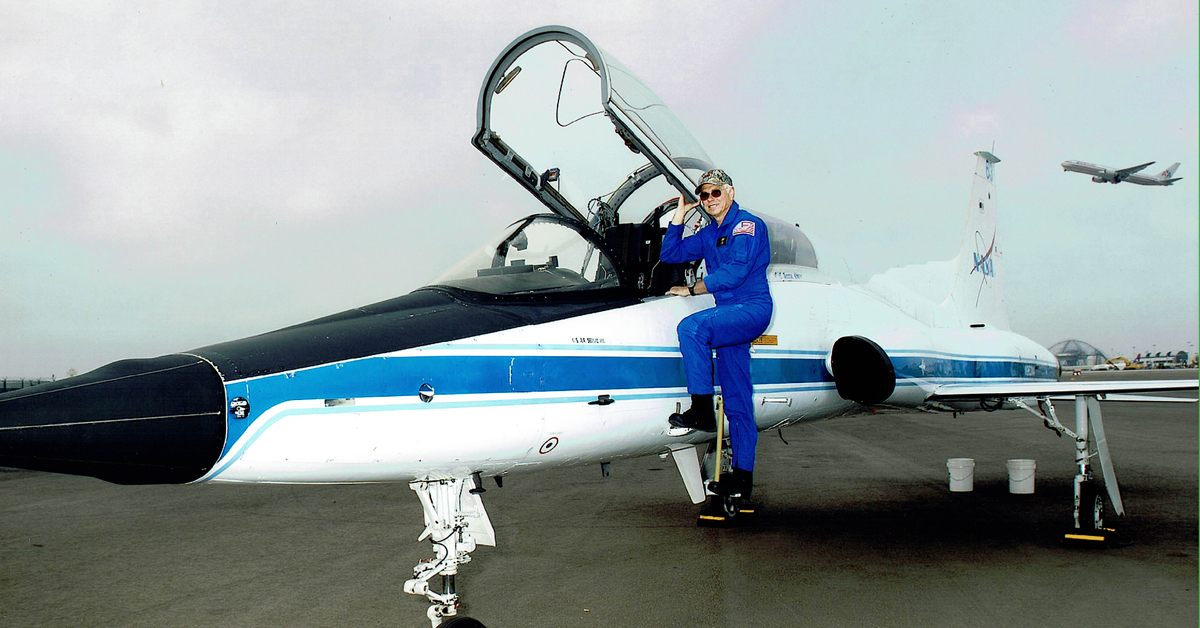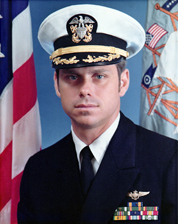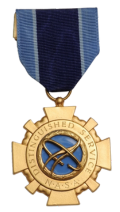
Commander David H. Finney (USN, Ret.) was a distinguished NASA aviator, an accomplished Navy test pilot, and a key figure in human spaceflight operations at the Johnson Space Center. His career spanned decades of dedicated  service, from combat missions in Vietnam to leading NASA’s extensive aircraft fleet.
service, from combat missions in Vietnam to leading NASA’s extensive aircraft fleet.
Born and raised in Auburn, Kentucky, Finney’s journey to the skies began at the United States Naval Academy, from which he graduated in 1967. He earned his coveted Navy Wings of Gold in 1968, marking the start of an exceptional career in naval aviation.
Vietnam Combat Veteran & Naval Pilot In 1969, Commander Finney joined an A-7A Corsair II squadron at NAS Lemoore, California. He completed a significant cruise aboard the USS Oriskany (CVA-34) and bravely flew seventy-five combat missions in Southeast Asia during the Vietnam War. His valor in combat earned him numerous Navy awards, including six Air Medals and the Navy Commendation with Combat V.
Advanced Aviation & Test Pilot Expertise Finney furthered his expertise, earning a Master of Science in Aeronautical Engineering from the United States Naval Postgraduate School in 1973. He served as a project officer at VX-5 at Naval Weapons Center China Lake, California, before returning to sea on a department head tour aboard the USS Midway (CVA-41), homeported in Yokosuka, Japan, flying A-7A and A-7E aircraft.
A testament to his exceptional skill, CDR Finney graduated from the prestigious British Empire Test Pilot School at A&AEE Boscombe Down, England, in 1979. Following this, he reported to the Naval Air Test Center, Patuxent River, Maryland, where he conducted the critical Navy Preliminary Evaluation of the F/A-18A Hornet, the advanced multirole combat jet that would become the U.S. Navy’s frontline fighter.
From 1981 to 1984, Commander Finney served as Executive Officer and then as Commanding Officer of VA-82, completing two Mediterranean cruises with the squadron aboard the USS Nimitz (CV-68). He returned to the Naval Air Test Center in 1984, holding pivotal roles as the Head of Carrier Suitability and later as the Chief Test Pilot of the Strike Aircraft Test Directorate.
Leadership at NASA Johnson Space Center After retiring from the Naval Service in 1987, Commander Finney joined the National Aeronautics and Space Administration (NASA) as a civilian research pilot and engineering manager  at the Johnson Space Center in Houston, Texas. He concurrently managed the acquisition of a second B747 Shuttle Carrier Aircraft, vital for transporting the Space Shuttle orbiters.
at the Johnson Space Center in Houston, Texas. He concurrently managed the acquisition of a second B747 Shuttle Carrier Aircraft, vital for transporting the Space Shuttle orbiters.
His leadership continued to shine as he served as Deputy Chief and then Chief of the Flight Crew Operations Space Station and Exploration Support Office from 1989 to 1993, representing the Astronaut Office in design and development activities for space programs. In 1993, he returned to the Aircraft Operations Division as Deputy Chief and was selected as its Chief in 1994, a position he held until his retirement from NASA in July 2008.
As Chief of the Johnson Space Center Aircraft Operations Division, Finney oversaw a fleet of 44 aircraft of eight types, logging 11,000 annual flight hours in direct support of human space flight and aeronautical research programs.
Legacy & Awards CDR David H. Finney logged an impressive 9,277 flight hours across 30 types of aircraft, including the T-38A, T-38N, Super Guppy, B747 Shuttle Carrier Aircraft, and G159 aircraft during his tenure at NASA.
David Haley Finney passed away on December 11, 2010, at the age of 65. He is survived by his wife Jill and his three sons, Navy Cmdr. Matthew David Finney, Cmdr. Benjamin Haley Finney, and Nathaniel Ryan Finney, continuing his family’s legacy of service.
Notable Awards & Decorations:
Navy Awards:
- Meritorious Service Medal
- Air Medal (6 awards)
- Navy Commendation with Combat V
- Navy Achievement Medal
- Various group, unit, and theatre awards
NASA Awards:
- NASA Distinguished Service Medal
- NASA Outstanding Leadership Medal
- 2008 GSA Federal Aviation Manager of the Year
- Five Group Achievement Awards
- Aviation Safety Award



